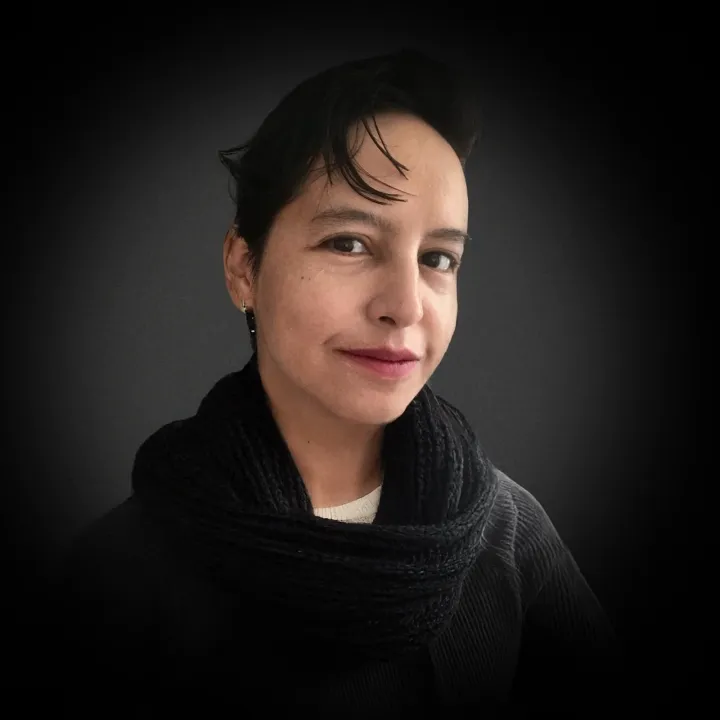Por Yuriria Rodríguez Castro
Mientras Norteamérica se extravía en políticas de Estado populistas a través de olas migratorias que se convierten en mano de obra del crimen organizado, las organizaciones criminales en México, Estados Unidos y Canadá ya alcanzaron el ideal de la revolución del conocimiento que ningún otro sistema político pudo lograr de manera legítima. Ahora es el crimen organizado transnacional con sus aprendizajes logísticos, industriales y tecnológicos, la gran potencia global. Esta es la conclusión a la que llegamos tras conversar con el especialista Luis Horacio Nájera, quien dejó hace unos años Ciudad Juárez con rumbo a Canadá, tras ser víctima de amenazas de grupos criminales.
Luis es conocido por su libro pionero en el tema del narcotráfico entre México y Canadá: The Woolfpack. The millenial mobsters who brought chaos and the cartels to the canadian underworld, que es un reportaje profundo sobre una generación de narcotraficantes millennials quienes arribaron a la escena del crimen organizado en Canadá con un perfil más ejecutivo que el del narcotraficante mexicano, pero que a partir noviembre pasado, con el desmantelamiento de un “súper laboratorio” de drogas sintéticas ubicado en una finca de la provincia de Columbia, se confirmaron los nexos que ya advertía Luis entre el narcotráfico mexicano y canadiense, simplemente por el método de producción con firma mexicana.
La tipología en la producción de drogas sintéticas permite identificar contactos entre las organizaciones, pues advierte la presencia de grupos criminales a partir de su comportamiento productivo: nunca antes se había visto en esa nación un laboratorio con características que sólo los narcotraficantes mexicanos llevan años mejorando. Se trata de un aprendizaje puesto en marcha con la instalación de laboratorios de drogas; como si fuera un enorme vivero escondido en una finca, así fue descubierto por la policía montada canadiense el “súper laboratorio”. El operativo también remite a la manera mexicana de no tener pruebas: un solo detenido y una muy dudosa documentación de propiedad que parece sugerir el uso de prestanombres. En México esto es de lo más frecuente, pero en Canadá resulta una novedad.
Luis Horacio menciona en su libro y durante nuestra plática cómo tras la muerte de los capos italianos que controlaban el mercado de las drogas en la nación canadiense, los traficantes mexicanos comenzaron a tejer vínculos con ellos, teniendo como lugar de reunión el puerto de Acapulco, Guerrero.
Al hablar con Luis Horacio se percibe la impronta del exilio, una sensación que cada vez resulta más cercana, pero escucharlo también evoca el análisis de una industria criminal violenta que daña a las dos naciones: se trata de ver al narcotráfico como un fenómeno político y mediático, a diferencia de la mítica y apologista construcción social del “narco” que engalana las series de televisión. Entre lo más destacado del encuentro es la coincidencia en que el crimen organizado en México y Canadá no se limita ni centra exclusivamente al tráfico de drogas, sino al intercambio comercial de conocimiento industrial y logístico:
“El narcotráfico también vivió eso que Moisés Naím llama la revolución del conocimiento”, advierte Luis, citando al escritor venezolano de Ilícito y El fin del poder. Es entonces cuando le pregunto si se puede hablar de un intercambio de asesoramiento industrial o empresarial en el crimen organizado, a lo que él agrega:
“Un ciudadano canadiense vietnamita fue detenido en Los Ángeles porque él tenía una compañía de telecomunicaciones en Canadá; vendía aparatos electrónicos encriptados al por mayor al crimen organizado. Ese tipo de oportunidades las han explotado en Canadá”, afirma Luis, quien me hace pensar inmediatamente en el potencial canadiense para grupos como Cártel Jalisco Nueva Generación (CJNG) y antes, el llamado Cartel del Golfo a través de su brazo armado, Los Zetas, que utilizaban radares y cámaras para realizar sus actividades criminales, esta organización fue liderada por Osiel Cárdenas, quien al cierre del año fue deportado a México en una insólita política de intercambio. Ahora, tanto el grupo de Sinaloa como CJNG utilizan las nuevas tecnologías para desplegar su industria.
Luis comenta que él tiene la sospecha de que el crimen organizado mexicano ha asesinado en Canadá a ciudadanos de origen canadiense y probablemente los hayan desaparecido, después menciona el caso del ex atleta olímpico Ryan James Wedding, quien en octubre del 2024 fue acusado de dirigir una red de tráfico de drogas vinculada con México, país donde fue detenido su segundo al mando, Andrew Clark, mientras él sigue prófugo.
“Una de las ventajas competitivas para el crimen organizado en Canadá es la diversidad. De hecho hay un grupo criminal que se llama Las naciones unidas, integrado por nativos, filipinos y latinoamericanos. Se trata de personas que hablan varios idiomas y tienen la facilidad de viajar con pasaportes desde Norteamérica hasta Oriente Medio”, señala Nájera.
En ese momento, Luis Horacio se refiere a Roby Alkhalil, vinculado a la pandilla de traficantes motociclistas Hells Angels (Ángeles del Infierno), “quien se escapó de prisión como de película”, comenta el periodista de origen mexicano. La expresión tiene similitudes con los escapes memorables y mediáticos de Joaquín Guzmán Loera (“El Chapo Guzmán”). Según la información de Luis, Alkhalil podría estar escondido bajo la protección de China o de algún país de Oriente Medio, entonces se refiere a la relación entre narcotráfico y terrorismo:
“Hay un video del narcotráfico mexicano donde decapitan a unos sicarios con una motosierra, que luego usan los yihadistas para advertir y amenazar sobre lo que ellos pueden hacer también”, recuerda Luis. Todo parece indicar que el video al que se refiere es del año 2014 y en él se observa a dos sicarios del Cártel de Sinaloa asesinados con dicha herramienta, mismo que fue publicado en el Blog del narco, portal y plataforma mediática mundial del crimen organizado mexicano.
Sin embargo, podría tratarse incluso de cualquier otro video de principios del 2000, pues son muchas las tipologías de comportamiento criminal que los narcotraficantes mexicanos y los terroristas yihadistas comparten, lo que demuestra que tal como lo hemos señalado en investigaciones académicas, existe una influencia no sólo en el mercado del tráfico de drogas para el financiamiento entre terrorismo islámico y narcotráfico en México, sino que también existe un intercambio de conocimiento reflejado en su ideología.
Luis Horacio advierte que le resulta muy “irresponsable” la negativa del gobierno mexicano a reconocer el comportamiento terrorista de los grupos criminales, quienes también comercian con personas, pues el delito de trata está unido al tráfico de estupefacientes y al comercio del terror, así como todos los delitos tienen relación entre sí evidentemente:
“El tema es saber en qué momento la ideología va a pasar de un lado hacia el otro; cuándo el criminal va a dejar de sentirse criminal para empezar a absorber el tema ideológico rumbo a una radicalización más profunda, más orientada al terrorismo”, advierte Luis.
“Antes el narcotráfico quería ser Estado, ¿no será que ahora el Estado quiere ser narcotráfico?”, lanza Nájera después de que hablamos sobre el largo camino conceptual que intenta negar la existencia del fenómeno terrorista en el crimen organizado mexicano, generalmente salvando al narcotráfico por la vía de escape de lo ideológico como excusa para no hablar de terrorismo. Otra evasiva muy recurrente es el uso político del tema para justificar una supuesta invasión al territorio mexicano, algo por demás fantasioso pero que se ha introducido en la opinión pública.
El “súper laboratorio” de fentanilo
“Vancouver es un puerto conectado a China”, dice Luis Horacio respecto a la nueva droga en el mercado regional y recuerda que en noviembre del 2024, la policía montada de Canadá desmanteló el “súper laboratorio” de drogas sintéticas jamás antes visto en dicha nación.
“Por el tipo de tecnología que encontraron, por el tipo de método utilizado, la policía considera que existe la mano del tráfico mexicano, muy probablemente asesorando o participando en sociedad. De hecho, una de las versiones mencionadas es que miembros de The Wolfpack estarían involucrados en este laboratorio”, advierte Nájera en referencia a su libro sobre la gran alianza criminal de traficantes en territorio canadiense. Este fue otro decomiso colosal para el mundo, prácticamente invisible para los medios de comunicación y autoridades mexicanas.
“Estamos viendo una mentalidad y un modelo de negocios diferente con las drogas sintéticas, el cual influye muchísimo para que los criminales tengan facilidades en su actividad. Ahora todo se puede hacer en el basement (sótano). Esto hace también que el fentanilo en Canadá sea un problema de salud pública, sobre todo en Vancouver y Toronto. Hay una organización que se dedica a tomar muestras de drogas y ha descubierto que la mayor parte de las muertes por sobredosis contienen altas cantidades de fentanilo y de tranq, droga que usan para los caballos”, destaca Luis Horacio.
“La experticia de las drogas se está llevando a otros países, donde el traficante se ha convertido en una especie de consultor porque sabe cómo se hace el negocio y lo contratan para eso”, destaca el escritor, utilizando un concepto que hace referencia a la pericia o habilidad adquirida por estos criminales.
“¿Entonces también se trafica con el conocimiento, con la técnica y la metodología en drogas?”, pregunto, a lo que Luis agrega que igual pasa con la “habilidad” de asesinar: “Es como en las compañías: se contrata a un consultor que te da el conocimiento en las distintas especialidades”, aclara al referirse a un asesoramiento en distintos niveles: producción, distribución y hasta campaña de mercado.
Desconfianza entre Canadá y México
Aquel Canadá controlada por motociclistas de la mafia italiana y algunos pequeños grupos de primera generación indígenas, cambió al dominio de los narcotraficantes mexicanos desde los primeros encuentros con entre la mafia ítalo-canadiense en Acapulco, Guerrero, hace ya muchos años, dice Nájera, quien además señala que la principal ventaja canadiense son sus puertos por la conexión Montreal-Nueva York, además del cruce del Niágara, pues son rutas que conectan fácilmente al mercado de drogas en toda la región norte de América con Europa y China.




